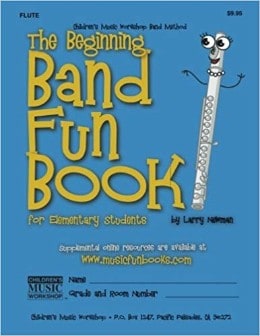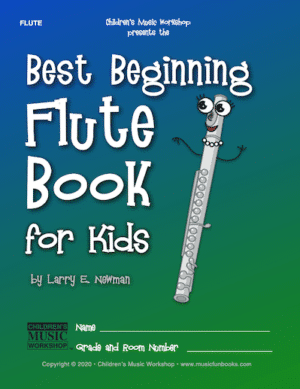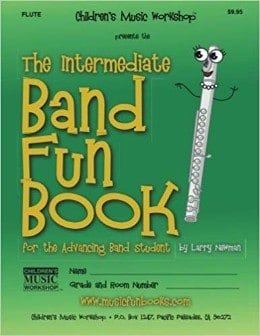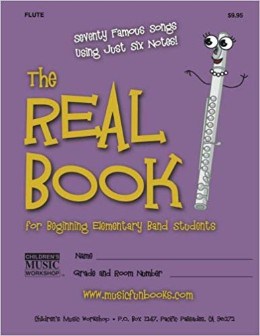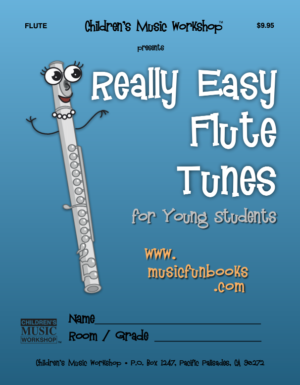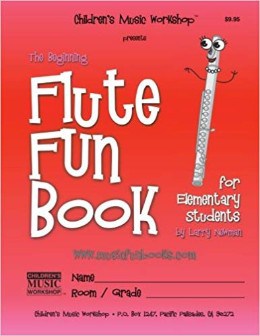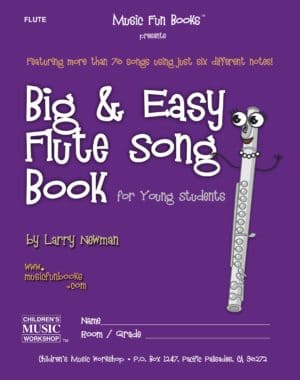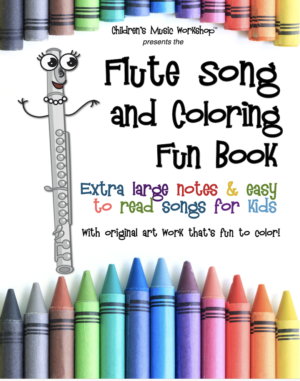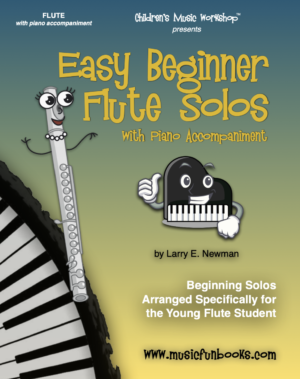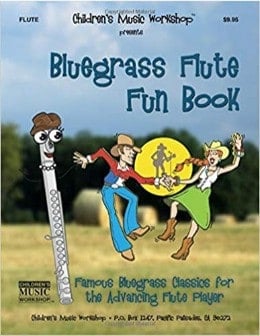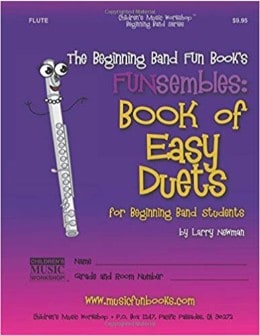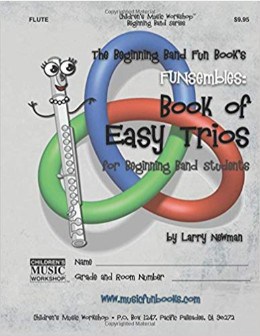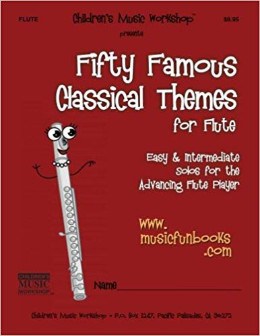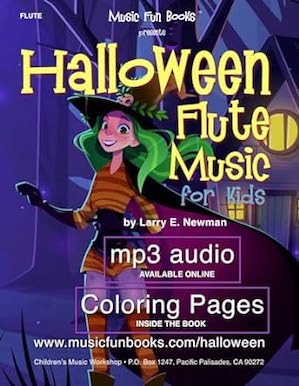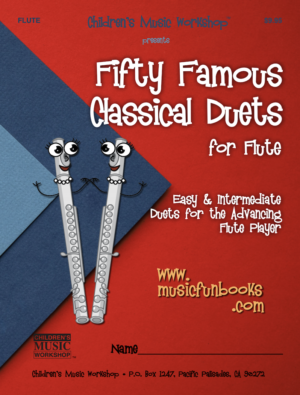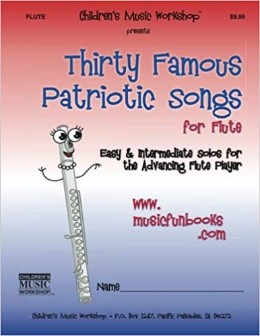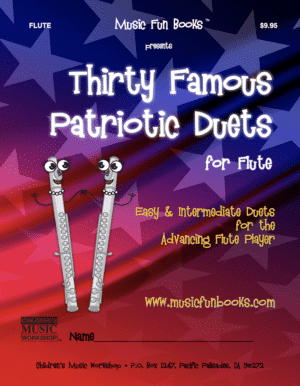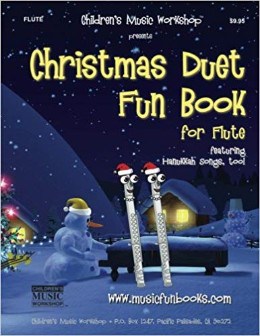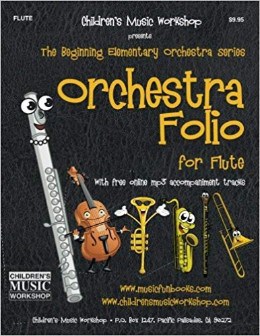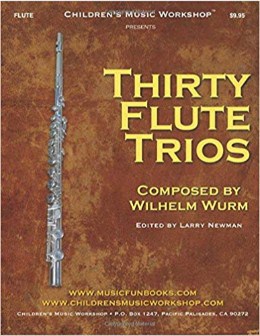Flute Books
(Click left and right arrows to see more books.)
Is Flute a Good Instrument for Kids?
A flute for a child is a great starting point for learning music. One of the most popular instruments in the world, the flute is played by people of all ages and skill levels. Flute repertoire is extensive: the instrument is used in school band programs, symphony orchestras, flute choirs, jazz ensembles, and as a solo instrument. Popular, classical, jazz, and even rock music has been either written or transcribed for the instrument.
Many people are unaware that the concert, or C flute is the best-known member of a family of related instruments played in the same manner. The flute family consists of the piccolo, E flat, concert, alto, and bass flutes. The concert flute is the instrument of choice for beginners.
Beginner school bands usually introduce the flute in the fourth or fifth grade. It is important for young players to be large enough to reach the keys without straining the neck or hands. For an eager student whose reach is not sufficient, flutes with curved headjoints are available; many flute manufacturers offer a beginner model instrument featuring both a standard and a curved-style headjoint. The curved headjoint makes it possible for a young flutist to hold the instrument without having to reach beyond his or her capabilities at first.
As the student grows, it is a simple matter to change over to the traditional, straight headjoint. Be sure to check with your local music dealer, band director, or flute teacher when deciding whether to purchase the extra headjoint option; the initial cost is nominal. Purchasing a regular flute and discovering later that the student really needs the curved head necessitates the purchase of the curved headjoint and another case as well.
The flute case is also very important. The flutet is a delicate instrument, and can easily be damaged, so look for a sturdy case with latches that will not come open. Most cases come with the purchase of a new instrument, but when buying a used flute, it may be necessary to replace an older case to protect your investment.
How to buy a flute for a student beginner begins with understanding flute history. An ancient Chinese flute, the “tsche,” played in about 2637 BC, is believed to be the earliest transverse flute (an instrument held horizontally). Made of bamboo, both sides were closed, with a mouth-hole in the middle. Flutes have been made of glass, wood, ceramic, brass, and even human and animal bones. Gradually, improvements over the crude designs were made, keys were added, and attempts were made to improve the pitch and sound of the instrument. It is to the genius of Theobald Boehm of Munich (1794-1881), a flutist, composer, and inventor, that we owe credit for the modern flute used today.
The flute as we now know it was conceived in 1846. After many experiments with the tube itself, and the size and position of the toneholes in relation to it, Boehm produced the modern flute. It had a parabolic, or tapered headjoint, a cylindrical body, and large toneholes covered by keys. He experimented with almost every material available. In 1847, he introduced his first flutes made of silver and German silver (a white alloy of copper, zinc, and nickel.)
At this time, the wooden flute was still preferred by players over metal instruments, and remained so until the early 20th century. It is interesting to note that, although the flute is thousands of years old, the instrument we know today was developed within a period of approximately 50 years, and was chiefly the work of one person, Theobald Boehm. So, how to buy a flute for a student beginner can be learned by finding out more about flutes and their history.
Is the Flute Difficult to Learn?
Most anyone, with practice, can learn to play the flute: the instrument described as being most closely related to the human voice. It is important to learn proper breathing techniques and breath support at the onset of playing so that a proper embouchure (lip formation) can be developed. Most teachers suggest that only the flute headjoint be used at first when attempting to make initial sounds.
The headjoint must vibrate in order for the sound to be produced; if a student is unable to make a sound with the headjoint, putting the instrument together will not help.
Some dizziness is common during the early stages of playing: this happens because beginner players have to learn the proper combination of embouchure [mouth] opening and air stream. This will go away as breath control is learned and is nothing to worry about. Keeping a chair handy and reminding the student to place his head between his knees until the feeling goes away is all that is necessary.
Since the flute is held across the body and not in front, it is difficult to see where the fingers are to be placed. It is recommended that one hold the flute in front so the new player can see correct finger placement without having to blow at the same time. Practicing finger combinations without worrying about sound production can help a student to develop the proper “feel” for the keys.
Knowing how to buy a flute for a student beginner and the difficulties one may encounter playing the flute, can make all the difference in the world.
Where to Buy Your Flute
How to buy a flute for a beginner begins with three types of places to buy your instrument: the local music shop, a mail-order house, or a private party selling a secondhand instrument. Each has its benefits, but a very important consideration is service.
You can take advantage of Children’s Music Workshop discount prices through The Instrument Place. Visit their website and order online!
A flute consists of many moving parts, and occasionally needs minor repairs and adjustments, especially with young players carrying the instrument to and from school and other activities. If you can find a dealer near you who has a repair person on site, they can often correct minor problems while you wait.
If you are going to purchase a used flute, it is important to have a company that will stand behind the purchase and make necessary repairs. A good dealer will often refurbish used instruments, and make them available for a reasonable price.

